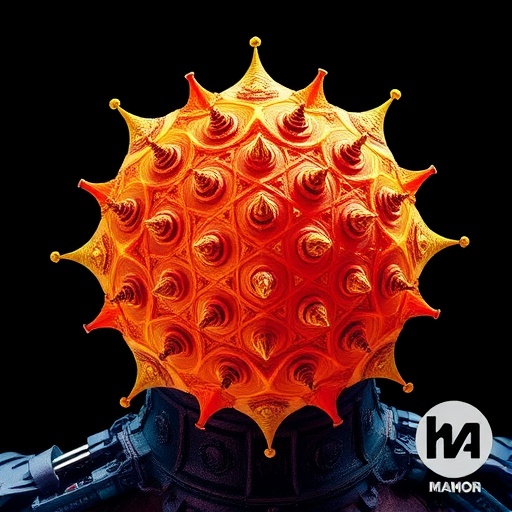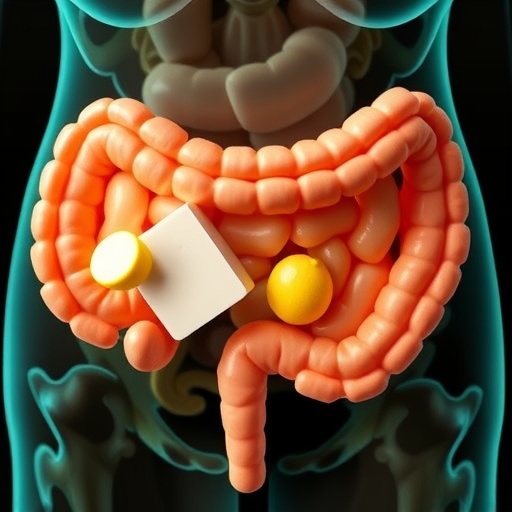
In the intricate choreography of embryonic development, the cellular and tissue-level mechanisms that pre-empt maladaptive outcomes remain an area of intense scientific curiosity. A recent study by Dey and colleagues, published in Nature, delves into one such mechanism, revealing how the loss of a specific tissue structure—the cephalic furrow (CF)—triggers a cascade of morphological abnormalities that impair embryogenesis in Drosophila melanogaster. By harnessing state-of-the-art optogenetic tools, the researchers dissected the physiological consequences of CF abrogation, uncovering disturbances that extend well beyond early gastrulation and profoundly influence embryonic viability.
Gastrulation, a pivotal developmental phase, orchestrates the reorganization of the embryonic layers to lay down the body axis. The organized invagination and movement of cells during this period give rise to critical morphological landmarks, including the ventral furrow and the cephalic furrow. The CF is traditionally understood as a key anatomical crease that separates the future head from the trunk regions. Yet, its precise functional contributions to embryonic morphogenesis have remained elusive until now.
Dey et al. employed the Opto-DNRho1 system—a cutting-edge optogenetic method that enables spatially and temporally precise manipulation of contractility—to selectively inhibit CF formation. This precise perturbation allowed their investigation to isolate the effects of CF loss from potential confounding factors such as genetic patterning abnormalities. Remarkably, despite the bilateral and targeted blockade of CF initiation, overall gastrulation proceeded normally with ventral furrow formation and closure occurring unaffected. This finding established a clear baseline: the perturbation specifically compromised the CF without disrupting the gross gastrulation program.
However, the absence of the CF induced a pronounced increase in ventral midline distortion approximately 90 minutes post-gastrulation onset. Notably, this distortion was not uniform but variable and frequently coincided with asymmetric buckling between the head and trunk regions of the developing embryo. These deformations are thought to arise from unrelieved compressive stress that, in the absence of the CF, is dissipated non-programmatically, leading to stochastic and physically disruptive morphological outcomes. This insight suggests the CF might act as a mechanical buffer or architectural element that reduces stochastic tissue stress during crucial morphogenetic movements.
Furthermore, the study revealed that the ventral midline distortions observed in the Opto-DNRho1 embryos were mirrored in embryos carrying mutations or RNA interference knockdowns in the buttonhead (btd) gene—known for its role in head segmentation and CF formation. This complementary evidence underscores the mechanistic link between CF integrity and proper embryonic morphology, reinforcing the CF’s role in maintaining structural coherence during morphogenesis.
While early-stage morphological deviations like ventral midline distortion serve as clear evidence of abnormal development, Dey et al. pushed their analysis further, assessing the longer-term developmental consequences of CF loss. By extending live imaging through late embryogenesis—up to 18 hours post-gastrulation—they uncovered an elevated incidence of more severe defects absent in control embryos. Specifically, they detected increased occurrences of head involution failures and abnormalities in ventral nerve cord (VNC) condensation. These defects implicate CF loss not just as a transient physical deformity but as a profound disruptor of embryonic patterning and organ morphogenesis.
Head involution is a critical process during which embryonic head segments internalize, permitting proper formation of essential structures such as the mouth and other craniofacial elements. Similarly, VNC condensation facilitates the assembly and wiring of the central nervous system, laying the foundation for neural function. Impairments in these processes are therefore predicted to have far-reaching consequences for organismal viability and fitness. The co-occurrence of head involution and VNC defects in CF-loss embryos suggests that these phenotypes are part of a distinct, complex developmental disruption independent of ventral midline distortions.
The use of optogenetic inhibition in this study is particularly noteworthy, as it reveals subtleties in tissue mechanics and developmental outcomes that are not easily dissected through traditional genetic or pharmacological methods. This temporal and spatial precision allowed the team to pinpoint gastrulation onset as a critical window during which CF formation exerts its morphogenetic influence, and later-stage phenotypic manifestations underscore the enduring impact of early tissue architectural defects.
Mechanistically, the findings highlight the CF as a physical interface that mitigates mechanical stress, preventing stochastic buckling and distortion during the intense cell movements of early development. By pre-empting tissue collision and dissipating compressive forces in a programmed manner, the CF ensures morphological robustness—a feature that may have been subject to evolutionary optimization. The consequences of CF ablation reveal how developmental systems employ architectural strategies to buffer stochastic physical forces, thereby preserving the fidelity of embryogenesis.
Beyond Drosophila, this research raises broader questions about the mechanical design principles underlying tissue morphogenesis in diverse organisms. The interplay between genetic patterning and biomechanical constraints emerges as a key determinant of developmental fidelity. Structures that mediate mechanical stress release may be more widespread evolutionary adaptations than previously appreciated.
In sum, Dey et al. have provided compelling evidence that the loss of the cephalic furrow disrupts embryonic development in multifaceted ways. Their work elucidates how an ostensibly localized tissue feature safeguards against physical distortions with potentially catastrophic downstream effects. By integrating optogenetics, live imaging, and mutant analyses, this study charts new territory in understanding the biomechanical underpinnings of embryogenesis.
Future investigations will undoubtedly explore how similar morphogenetic interfaces operate in other model organisms, as well as their implications for developmental disorders. The methods and conceptual frameworks introduced by this work promise to inform advances in tissue engineering, regenerative medicine, and evolutionary developmental biology.
Advances in optogenetic control of tissue mechanics, as demonstrated here, open the door to dissecting the choreography of development with unprecedented precision. Insight into how embryonic tissues prevent stochastic failure modes not only deepens our fundamental grasp of developmental robustness but also suggests strategies to ameliorate congenital defects that arise from mechanical dysregulation.
Ultimately, the discovery that evolution has embedded mechanical fail-safes such as the CF to pre-empt tissue collisions underscores the exquisite integration of physical forces and genetic programs in shaping life. This study stands as a testament to the power of interdisciplinary approaches to decode the language of development, where mechanics and molecular biology intersect to sculpt the embryo.
Subject of Research: Mechanical and developmental roles of the cephalic furrow in Drosophila melanogaster embryogenesis
Article Title: Divergent evolutionary strategies pre-empt tissue collision in gastrulation
Article References:
Dey, B., Kaul, V., Kale, G. et al. Divergent evolutionary strategies pre-empt tissue collision in gastrulation. Nature (2025). https://doi.org/10.1038/s41586-025-09447-4
Image Credits: AI Generated
Tags: cellular reorganization during gastrulationcephalic furrow functioncontractility manipulation in developmentdevelopmental biology innovationsDrosophila melanogaster researchembryogenesis viability factorsembryonic development mechanismsgastrulation phase significancemorphological abnormalities in embryosoptogenetic tools in biologyphysiological consequences of tissue losstissue-level evolution strategies




